The Field: where all the green magic happens!
Our main goal is to provide a platform for students to put into practice the things they learn in their studies, learn more about small scale farming and management practices, and most importantly relieve stress from university work by connecting with people and nature.Our field situated at the University campus (right behind Dijgraaf building), is fragmented into smaller pieces where we have the below mentioned projects are being carried out at the moment.
You can also check the Field's website for information about the other field-users with whom we share this beautiful piece of land.
You can also check the Field's website for information about the other field-users with whom we share this beautiful piece of land.
|
|
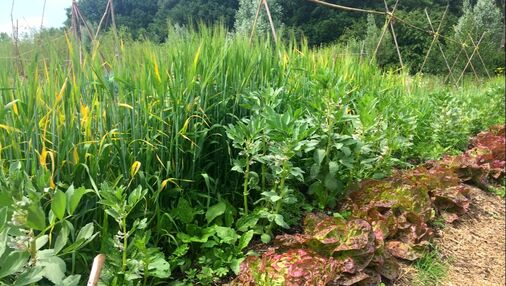
Intercropping garden
Hello everyone! This year the field organization has evolved and we decided that is time to put in practice what we have been learning in class. From this reflection the intercropping garden project emerged, with the aim of cultivating different crops species taking advantage of the help they can give to each other. The designated area of the field will be divided in six cultivation beds where 3-4 related species will be placed close to each other, according to the synergies that researchers have been attempting to study in the recent years. The main challenges we are facing, very determined to overcome, consist in planning and organizing with correct timing the companion crops that will grow in the different locations and the correct timing in their sowing and transplanting. We are very enthusiastic to see which will be the fruits of our work!
Together with the intercropping garden we will dedicate some time to remove weeds and prepare another patch of land in the field to sow green manure crops. Green manure is defined as crops that help creating and maintaining soil fertility, often represented by legumes or mixtures of cereals, legumes and brassicas. These crops do not have the aim of directly producing food, but they will be incorporated in the soil when their flowering window will start. Our main tasks consist in species choice, patch creating and sowing of
the crop/crops.
Hello everyone! This year the field organization has evolved and we decided that is time to put in practice what we have been learning in class. From this reflection the intercropping garden project emerged, with the aim of cultivating different crops species taking advantage of the help they can give to each other. The designated area of the field will be divided in six cultivation beds where 3-4 related species will be placed close to each other, according to the synergies that researchers have been attempting to study in the recent years. The main challenges we are facing, very determined to overcome, consist in planning and organizing with correct timing the companion crops that will grow in the different locations and the correct timing in their sowing and transplanting. We are very enthusiastic to see which will be the fruits of our work!
Together with the intercropping garden we will dedicate some time to remove weeds and prepare another patch of land in the field to sow green manure crops. Green manure is defined as crops that help creating and maintaining soil fertility, often represented by legumes or mixtures of cereals, legumes and brassicas. These crops do not have the aim of directly producing food, but they will be incorporated in the soil when their flowering window will start. Our main tasks consist in species choice, patch creating and sowing of
the crop/crops.
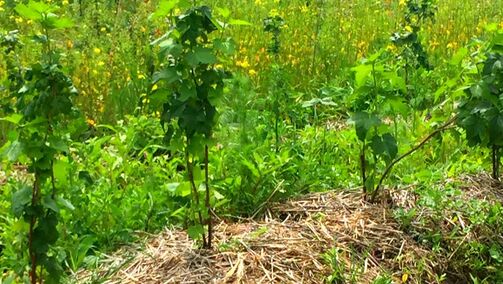
Permaculture
In the permaculture project we are facilitating the succession of a natural ecosystem with edible plants. In this part of the field there are mainly perennial plants, including a diverse variety of fruit- and nut trees as well as berry bushes. In the spaces between we plant (leftover) annual crops and a patch of winter wheat which serves as a cover crop. Every year the permaculture part will produce more and more, and will slowly turn into a food forest.

Picking garden
Just imagine: walking through a jasmine arch into a lush & dreamy garden full of edible plants, medicinal & culinary herbs and flowers you can actually eat! That must be the definition of joy right? Well, we think so at least, which is why we want to create a beautiful picking garden on the field. Two years back this was already initiated, but it slowly but surely turned into a wild grassy part with the occasional parsley or strawberry.
Time to start fresh and try again! The focus for this year is on preparing the land & planting perennial plants, but we’ll sow some yummy annual veggies & herbs as well ”
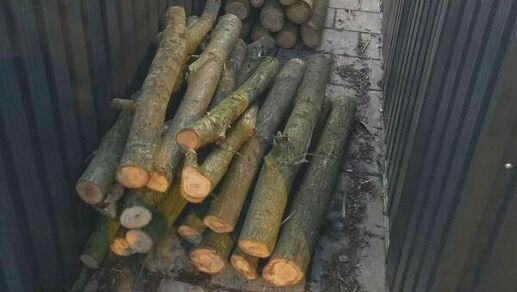
Mushroom project
Mushroom project was started already in 2018, however didn’t yield good results, and from the Autumn of 2019 we decided to give it another try, but this time with a better preparation and help of an expert - Pip Gilmore from Groene Takken. Together with Pip we collected about 60 oak logs from a forest of suitable height and width and going to inoculate them with shiitake mycelium. We are also hoping to collaborate with Pip on experimenting with different mushroom varieties and different wood. We will then keep all the logs on the field in a shaded and protected area. These logs will produce mushrooms for 3-5 years for us.
It will take one year before these logs start to produce actual mushrooms. Meanwhile, we are also curious to try planting ground mushrooms in straw and sawdust beds within the permaculture project on the field. But this could be done only in spring when the temperature outside is above 10°C. Our goal is to produce sufficient amount of a variety of mushrooms for all the members and visitors of WSF to enjoy.
Mushroom project was started already in 2018, however didn’t yield good results, and from the Autumn of 2019 we decided to give it another try, but this time with a better preparation and help of an expert - Pip Gilmore from Groene Takken. Together with Pip we collected about 60 oak logs from a forest of suitable height and width and going to inoculate them with shiitake mycelium. We are also hoping to collaborate with Pip on experimenting with different mushroom varieties and different wood. We will then keep all the logs on the field in a shaded and protected area. These logs will produce mushrooms for 3-5 years for us.
It will take one year before these logs start to produce actual mushrooms. Meanwhile, we are also curious to try planting ground mushrooms in straw and sawdust beds within the permaculture project on the field. But this could be done only in spring when the temperature outside is above 10°C. Our goal is to produce sufficient amount of a variety of mushrooms for all the members and visitors of WSF to enjoy.
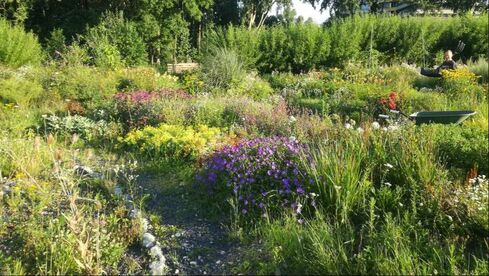
Flower power
Hi guys! We're the flower project, also known as Flower Power! We are a field project that takes care of the WSF flowers located at the front left of the field. Our flowers really are what makes the field shine, and it wouldn't be half as beautiful without them. :) We have perennial plants that can either be just taken care of or changed up and give a new vibe to our beautiful little farm. We try our best to make sure the field is always blooming, so if you want to help design a flower bed and learn wit us then join Flower Power!
Flower power
Hi guys! We're the flower project, also known as Flower Power! We are a field project that takes care of the WSF flowers located at the front left of the field. Our flowers really are what makes the field shine, and it wouldn't be half as beautiful without them. :) We have perennial plants that can either be just taken care of or changed up and give a new vibe to our beautiful little farm. We try our best to make sure the field is always blooming, so if you want to help design a flower bed and learn wit us then join Flower Power!
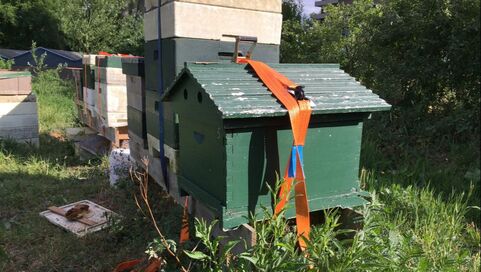
The WannaBees
Buzz!! Hey Hey! Somewhere in the back of the field, in a shielded, a bit hidden place, however very strategically placed you can find our beehives. The bees there belong both to WSF and to Wageningen Bee Team.
The WSF Bee Team has been there for quite some time, but lacked a bit of continuity, as its members were busy bees themselves. Our main activity is of course beekeeping, but not only. We also want to make use of everything the bees give us (wax & honey) and give them something back by creating a proper environment for them and by spreading awareness of their extinction.
If you are a bee lover and want to know more about bees, then you can join our little colony and we can all learn together.
Buzz!! Hey Hey! Somewhere in the back of the field, in a shielded, a bit hidden place, however very strategically placed you can find our beehives. The bees there belong both to WSF and to Wageningen Bee Team.
The WSF Bee Team has been there for quite some time, but lacked a bit of continuity, as its members were busy bees themselves. Our main activity is of course beekeeping, but not only. We also want to make use of everything the bees give us (wax & honey) and give them something back by creating a proper environment for them and by spreading awareness of their extinction.
If you are a bee lover and want to know more about bees, then you can join our little colony and we can all learn together.

